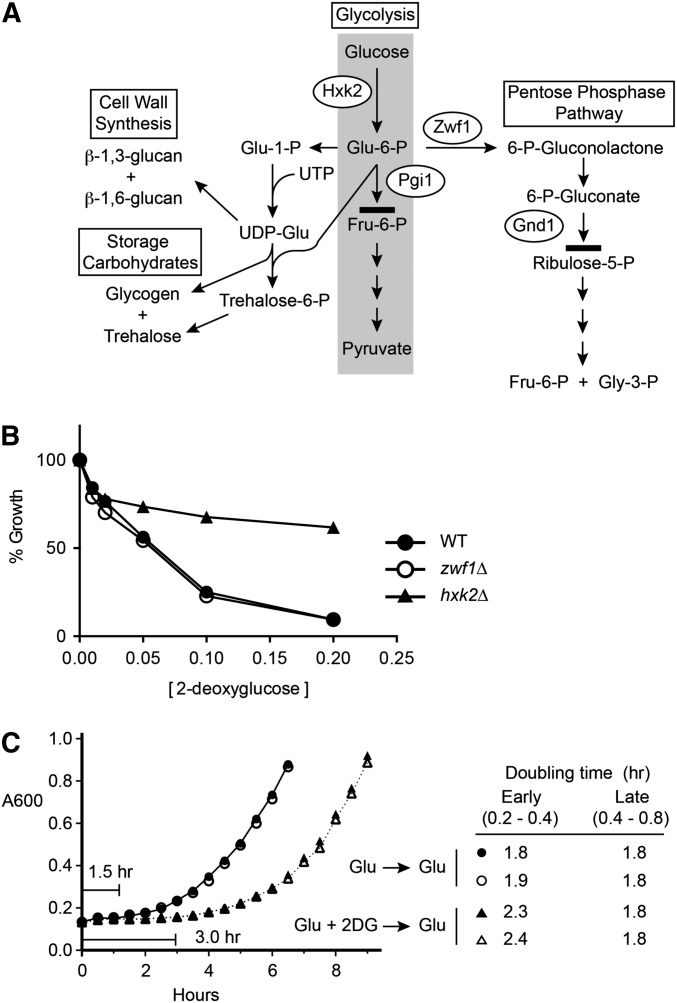Figure 7.
Persistent inhibition by 2DG. (A) Four pathways of glucose metabolism in yeast are shown. 2-Deoxyglucose can be converted to 2-deoxyglucose-6-phosphate by hexokinase II (Hxk2) and used for cell wall synthesis and storage carbohydrate metabolism. 2-Deoxyglucose-6-phosphate cannot proceed further in glycolysis than the step catalyzed by phosphoglucose isomerase (Pgi1) but could enter the pentose phosphate pathway through oxidation by glucose-6-phosphate dehydrogenase (Zwf1). Further metabolism in the pentose phosphate pathway is blocked at the step catalyzed by 6-phosphogluconate dehydrogenase (Gnd1). (B) 2DG resistance assay of wild-type cells compared to zwf1∆ and hxk2∆ cells. (C) Wild-type cells were grown in duplicate cultures in YEPD media overnight in the absence (circles) or presence (triangles) of 0.2% 2DG. Cells were harvested, washed in YEPD, and diluted to an A600 of 0.15 in YEPD media. Cell growth was measured by reading absorbance at 600 nm. Lag times and doubling times for the cultures with and without 2DG treatment are indicated.

